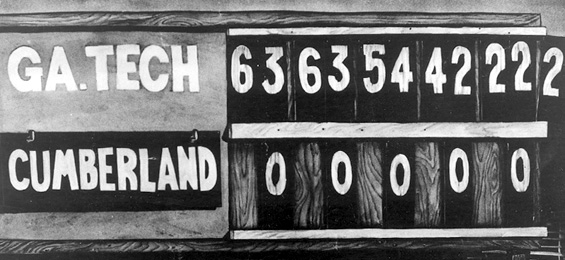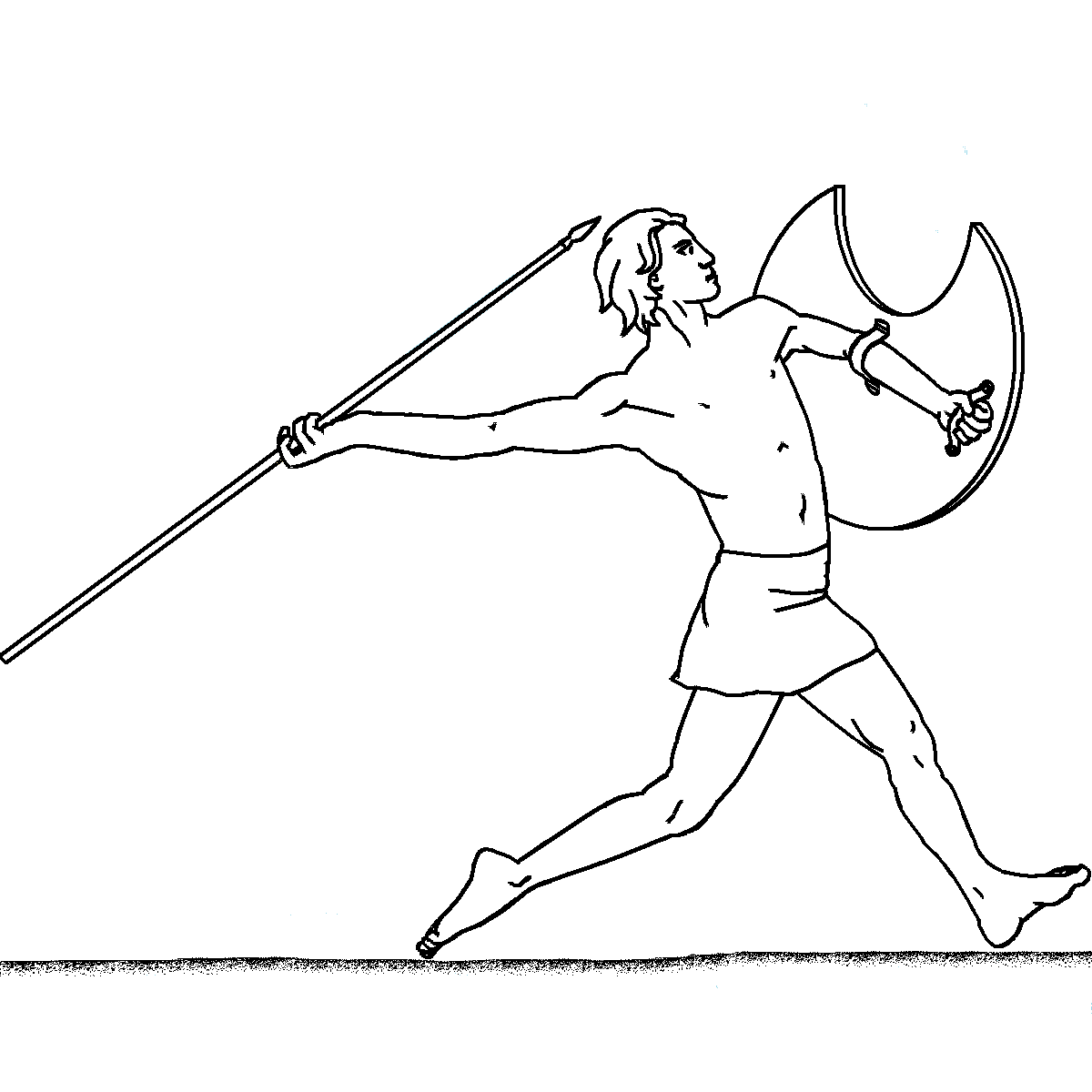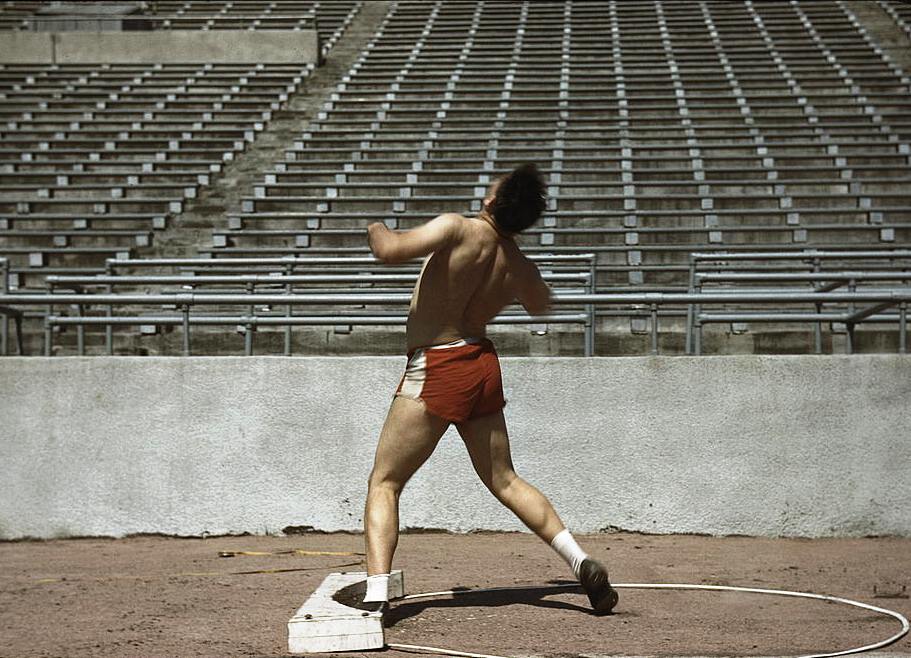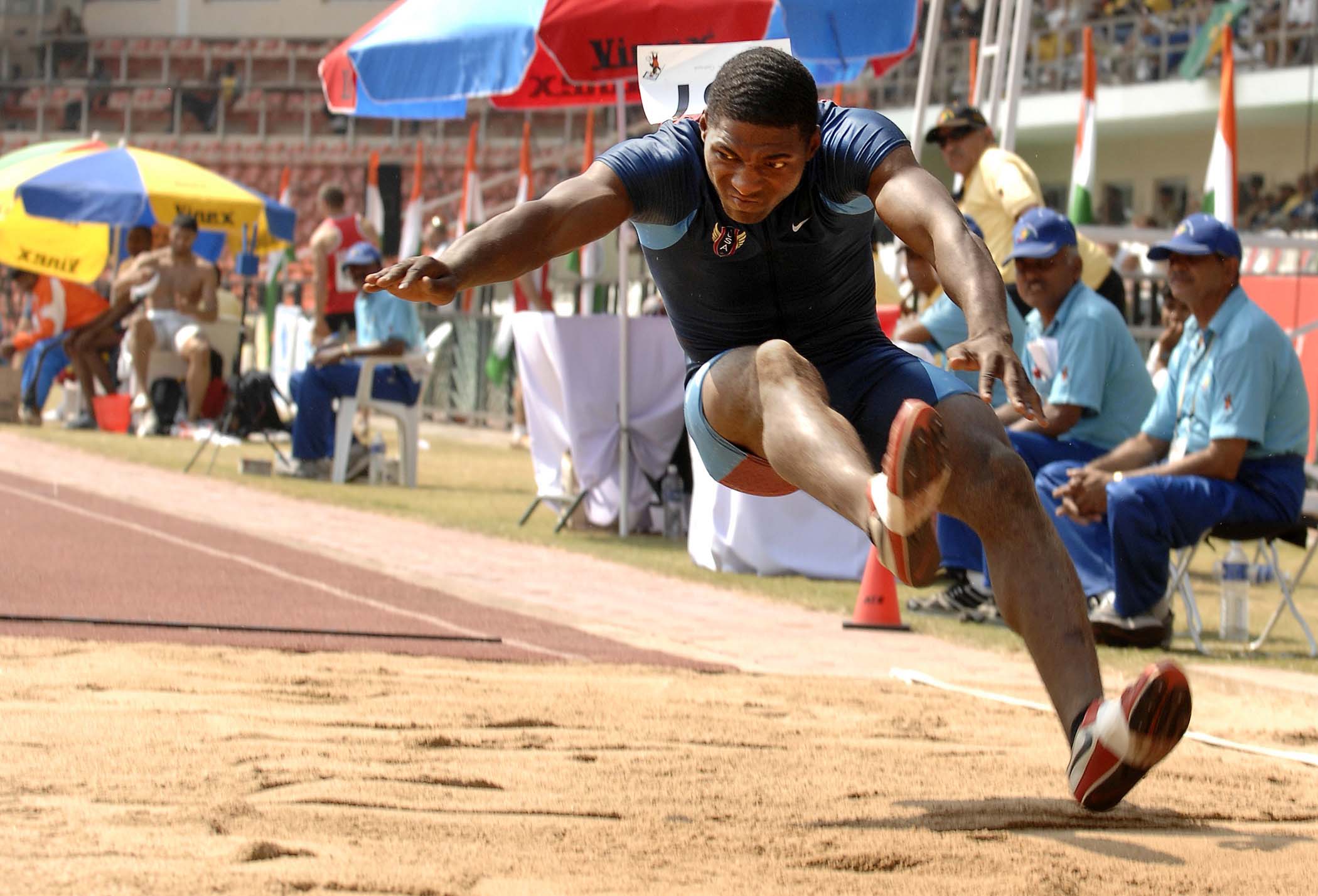|
1923 USA Outdoor Track And Field Championships
The 1923 USA Outdoor Track and Field Championships women's competition were the first national track and field championships for women in the United States. The tournament was held on 29 September 1923 at Weequahic Park in Newark, New Jersey. Background After the initial Women's World Games in 1922 in Paris and the three Women's Olympiads (1921 Women's Olympiad, 1922 Women's Olympiad and 1923 Women's World Games) in Monaco, interest in women's sports grew internationally. In 1922, the Women's Amateur Athletic Association (WAAA) was founded in the United Kingdom. The WAAA organised the first official British women's championships in track and field ( WAAA Championships) on 18 August 1923 at the Oxo Sports Ground in Downham outside London. In the United States, the Amateur Athletic Union (AAU) was founded in 1888, and held its first national championship for women in the sport of swimming in 1916. In 1922, try-outs for the 1922 Women's World Games were held on 13 May at Oaks ... [...More Info...] [...Related Items...] OR: [Wikipedia] [Google] [Baidu] |
Newark, New Jersey
Newark ( , ) is the List of municipalities in New Jersey, most populous City (New Jersey), city in the U.S. state of New Jersey and the county seat, seat of Essex County, New Jersey, Essex County and the second largest city within the New York metropolitan area.New Jersey County Map New Jersey Department of State. Accessed July 10, 2017. The city had a population of 311,549 as of the 2020 United States census, 2020 U.S. census, and was calculated at 307,220 by the Population Estimates Program for 2021, making it List of United States cities by population, the nation's 66th-most populous municipality. [...More Info...] [...Related Items...] OR: [Wikipedia] [Google] [Baidu] |
1916 In Sports
:''Note — many sporting events did not take place because of World War I'' 1916 in sports describes the year's events in world sport. American football 1916 college football season, College championship * NCAA Division I FBS National Football Championship, College football national championship – Pittsburgh Panthers Events * 7 October — Georgia Institute of Technology, Georgia Tech Georgia Tech Yellow Jackets football, Yellow Jackets defeats the Cumberland University Bulldogs by a score of 222–0, the most one-sided game in college football history. Association football Europe * There is no major football in Europe due to World War I South America * 9 July — CONMEBOL, the governing body of South American football, is founded Australian rules football VFL Premiership * 2 September: Fitzroy Football Club, Fitzroy wins the 20th Australian Football League, VFL 1916 VFL season, Premiership: Fitzroy 12.13 (85) d Carlton Football Club, Carlton 8.8 (56) at Melbourne Cricket Gr ... [...More Info...] [...Related Items...] OR: [Wikipedia] [Google] [Baidu] |
Marion McCartie
Marion may refer to: People *Marion (given name) * Marion (surname) *Marion Silva Fernandes, Brazilian footballer known simply as "Marion" * Marion (singer), Filipino singer-songwriter and pianist Marion Aunor (born 1992) Places Antarctica * Marion Nunataks, Charcot Island Australia * City of Marion, a local government area in South Australia * Marion, South Australia, a suburb of Adelaide Cyprus * Marion, Cyprus, an ancient city-state South Africa *Marion Island, one of the Prince Edward Islands United States * Marion, Alabama * Marion, Arkansas * Marion, Connecticut ** Marion Historic District (Cheshire and Southington, Connecticut) * Marion, Georgia * Marion, Illinois * Marion, Indiana, Grant County * Marion, Shelby County, Indiana * Marion, Iowa * Marion, Kansas ** Marion County Lake ** Marion Reservoir * Marion, Kentucky * Marion, Louisiana * Marion, Massachusetts * Marion Station, Maryland, often referred to as just "Marion" * Marion, Michigan * Marion, Minnesota * Ma ... [...More Info...] [...Related Items...] OR: [Wikipedia] [Google] [Baidu] |
Softball Throw
Softball is a game similar to baseball played with a larger ball on a smaller field. Softball is played competitively at club levels, the college level, and the professional level. The game was first created in 1887 in Chicago by George Hancock. There are two rule sets for softball generally: ''slow pitch softball'' and ''fastpitch''. Slow pitch softball is commonly played recreationally, while women's fastpitch softball is a Summer Olympic sport and is played professionally. Depending on the variety being played and the age and gender of the players, the particulars of field and equipment vary. While distances between bases of 60 feet are standard across varieties, the pitcher's plate ranges from 35 to 43 feet away from home plate, and the home run fence can be 220 to 300 feet away from home plate. The ball itself is typically 11 or 12 inches (28 or 30 cm) in circumference, also depending on specifics of the competition. Softball rules vary somewhat from those of baseba ... [...More Info...] [...Related Items...] OR: [Wikipedia] [Google] [Baidu] |
Javelin
A javelin is a light spear designed primarily to be thrown, historically as a ranged weapon, but today predominantly for sport. The javelin is almost always thrown by hand, unlike the sling, bow, and crossbow, which launch projectiles with the aid of a hand-held mechanism. However, devices do exist to assist the javelin thrower in achieving greater distance, such as spear-throwers or the amentum. A warrior or soldier armed primarily with one or more javelins is a javelineer. The word javelin comes from Middle English and it derives from Old French ''javelin'', a diminutive of ''javelot'', which meant spear. The word ''javelot'' probably originated from one of the Celtic languages. Prehistory There is archaeological evidence that javelins and throwing sticks were already in use by the last phase of the Lower Paleolithic. Seven spear-like objects were found in a coal mine in the city of Schöningen, Germany. Stratigraphic dating indicates that the weapons are about 400,000 ... [...More Info...] [...Related Items...] OR: [Wikipedia] [Google] [Baidu] |
Shot Put
The shot put is a track and field event involving "putting" (throwing) a heavy spherical ball—the ''shot''—as far as possible. The shot put competition for men has been a part of the modern Olympics since their revival in 1896, and women's competition began in 1948. History Homer mentions competitions of rock throwing by soldiers during the Siege of Troy but there is no record of any dead weights being thrown in Greek competitions. The first evidence for stone- or weight-throwing events were in the Scottish Highlands, and date back to approximately the first century. In the 16th century King Henry VIII was noted for his prowess in court competitions of weight and hammer throwing. The first events resembling the modern shot put likely occurred in the Middle Ages when soldiers held competitions in which they hurled cannonballs. Shot put competitions were first recorded in early 19th century Scotland, and were a part of the British Amateur Championships beginning in 18 ... [...More Info...] [...Related Items...] OR: [Wikipedia] [Google] [Baidu] |
Discus Throw
The discus throw (), also known as disc throw, is a track and field event in which an athlete throws a heavy disc—called a discus—in an attempt to mark a farther distance than their competitors. It is an ancient sport, as demonstrated by the fifth-century-BC Myron statue '' Discobolus''. Although not part of the current pentathlon, it was one of the events of the ancient Greek pentathlon, which can be dated back to at least 708 BC, and it is part of the modern decathlon. History The sport of throwing the discus traces back to it being an event in the original Olympic Games of Ancient Greece. The discus as a sport was resurrected in Magdeburg, Germany, by gymnastics teacher Christian Georg Kohlrausch and his students in the 1870s. Organized men's competition was resumed in the late 19th century, and has been a part of the modern Summer Olympic Games since the first modern competition, the 1896 Summer Olympics. Images of discus throwers figured prominently in advertis ... [...More Info...] [...Related Items...] OR: [Wikipedia] [Google] [Baidu] |
Long Jump
The long jump is a track and field event in which athletes combine speed, strength and agility in an attempt to leap as far as possible from a takeoff point. Along with the triple jump, the two events that measure jumping for distance as a group are referred to as the "horizontal jumps". This event has a history in the ancient Olympic Games and has been a modern Olympic event for men since the first Olympics in 1896 and for women since 1948. Rules At the elite level, competitors run down a runway (usually coated with the same rubberized surface as running tracks, crumb rubber or vulcanized rubber, known generally as an all-weather track) and jump as far as they can from a wooden or synthetic board, 20 centimetres or 8 inches wide, that is built flush with the runway, into a pit filled with soft damp sand. If the competitor starts the leap with any part of the foot past the foul line, the jump is declared a foul and no distance is recorded. A layer of plasticine ... [...More Info...] [...Related Items...] OR: [Wikipedia] [Google] [Baidu] |
High Jump
The high jump is a track and field event in which competitors must jump unaided over a horizontal bar placed at measured heights without dislodging it. In its modern, most-practiced format, a bar is placed between two standards with a crash mat for landing. Since ancient times, competitors have introduced increasingly effective techniques to arrive at the current form, and the current universally preferred method is the Fosbury Flop, in which athletes run towards the bar and leap head first with their back to the bar. The discipline is, alongside the pole vault, one of two vertical clearance events in the Olympic athletics program. It is contested at the World Championships in Athletics and the World Athletics Indoor Championships, and is a common occurrence at track and field meets. The high jump was among the first events deemed acceptable for women, having been held at the 1928 Olympic Games. Javier Sotomayor (Cuba) is the current men's record holder with a jump of set ... [...More Info...] [...Related Items...] OR: [Wikipedia] [Google] [Baidu] |
Hurdling
Hurdling is the act of jumping over an obstacle at a high speed or in a sprint. In the early 19th century, hurdlers ran at and jumped over each hurdle (sometimes known as 'burgles'), landing on both feet and checking their forward motion. Today, the dominant step patterns are the 3-step for high hurdles, 7-step for low hurdles, and 15-step for intermediate hurdles. Hurdling is a highly specialized form of obstacle racing, and is part of the sport of athletics. In hurdling events, barriers known as hurdles are set at precisely measured heights and distances. Each athlete must pass over the hurdles; passing under or intentionally knocking over hurdles will result in disqualification. Accidental knocking over of hurdles is not cause for disqualification, but the hurdles are weighted to make doing so disadvantageous. In 1902 Spalding equipment company sold the Foster Patent Safety Hurdle, a wood hurdle. In 1923 some of the wood hurdles weighed each. Hurdle design improvements ... [...More Info...] [...Related Items...] OR: [Wikipedia] [Google] [Baidu] |
Relay Race
A relay race is a racing competition where members of a team take turns completing parts of racecourse or performing a certain action. Relay races take the form of professional races and amateur games. Relay races are common in running, orienteering, swimming, cross-country skiing, biathlon, or ice skating (usually with a baton in the fist). In the Olympic Games, there are several types of relay races that are part of track and field. Relay race, also called Relay, a track-and-field sport consisting of a set number of stages (legs), usually four, each leg run by a different member of a team. The runner finishing one leg is usually required to pass the next runner a stick-like object known as a "baton" while both are running in a marked exchange zone. In most relays, team members cover equal distances: Olympic events for both men and women are the 400-metre (4 × 100-metre) and 1,600-metre (4 × 400-metre) relays. Some non-Olympic relays are held at distances of 800 m, 3,200 ... [...More Info...] [...Related Items...] OR: [Wikipedia] [Google] [Baidu] |
Sprint (running)
Sprinting is running over a short distance at the top-most speed of the body in a limited period of time. It is used in many sports that incorporate running, typically as a way of quickly reaching a target or goal, or avoiding or catching an opponent. Human physiology dictates that a runner's near-top speed cannot be maintained for more than 30–35 seconds due to the depletion of phosphocreatine stores in muscles, and perhaps secondarily to excessive metabolic acidosis as a result of anaerobic glycolysis. In athletics and track and field, sprints (or dashes) are races over short distances. They are among the oldest running competitions, being recorded at the Ancient Olympic Games. Three sprints are currently held at the modern Summer Olympics and outdoor World Championships: the 100 metres, 200 metres, and 400 metres. At the professional level, sprinters begin the race by assuming a crouching position in the starting blocks before driving forward and gradually moving int ... [...More Info...] [...Related Items...] OR: [Wikipedia] [Google] [Baidu] |









